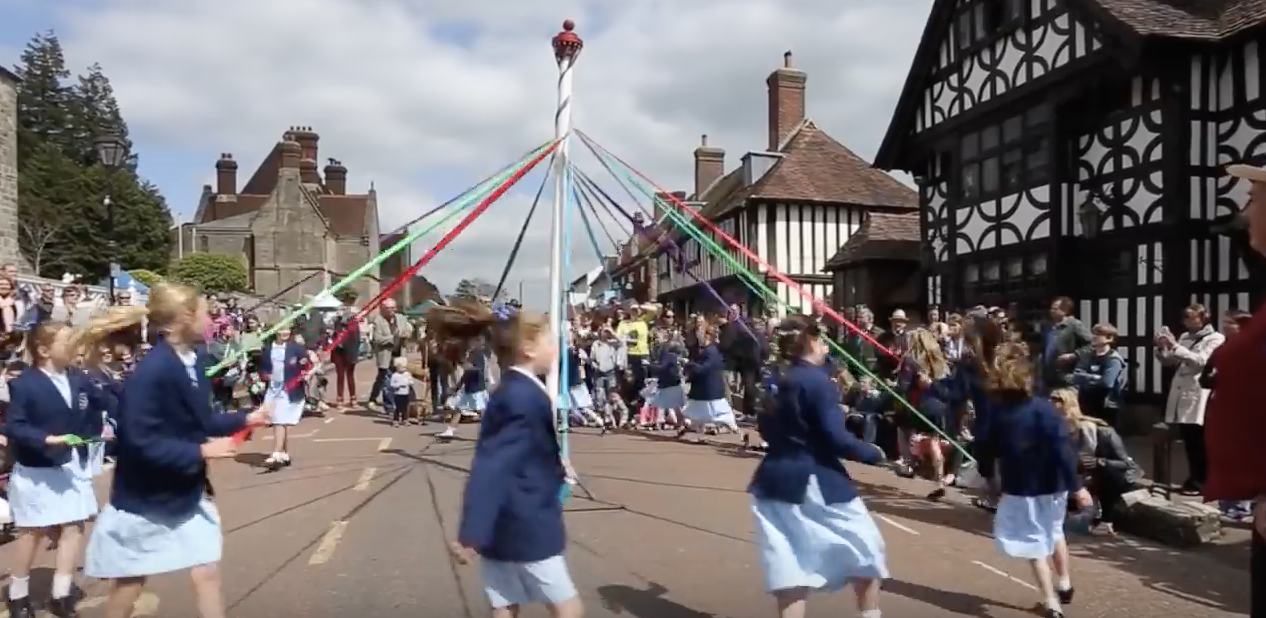Did you know that May Day is more than just a day of commemoration for laborers? It also has historic significance as a harvest and fertility festival, commemorated with official dance traditions.
This seemingly modern holiday actually originated as a Germanic pagan, fertility ritual celebrating the first spring planting. Beginning celebrations on the eve of May, April 30th, the ancient Saxons celebrated May 1st as a day of fire was also the Celtic god of the sun.
A prominent symbol of this ritual is the Maypole, that May Day dances centered around. The Maypole is an ancient symbol of fertility and also the Egyptian god and King Osiris’ phallus. The wooden pole meant to represent male generative powers in the phallus, it is essentially an idol of male genitalia, and holds great significance in the aforementioned and other cultures.
A key part of the May Day festivals throughout European is having a traditional, ceremonial dance performed around the erected pole as part of the May Day or Pentecost (Whitsun) festivities. Originally the dance was performed around a living tree on May Day, May 1st. While in Sweden it is performed during their Midsummer celebrations.
Fourth grade students perform the twining ribbon May Day dance.
The folk dance hails from)England, Germany, and Sweden. The dance has two main forms. The first and most popular consists of dancers moving in circles around a festively decorated pole. While the second consists of dancers holding a small, colored ribbon attached to a smaller pole. As they move around the pole, they intertwine their ribbon in a web of sorts around the pole. They later retrace their steps to untangle their visual work of art which was facilitated by their performing art. This second version traces back to the 18th century, and was also popular in France and Italy.
It became part of traveling shows with touring dance troupes performing that performed it in English theaters, garnering a larger audience and helping to spread its popularity throughout the region.
An English teacher training school adopted the dance, making it a part of the curriculum of physical education for girls, and remained common place throughout English and American elementary schools into the 1950’s.
English school children eagerly perform May Day dance.
Today, May Day dances are still performed at events throughout the world.

